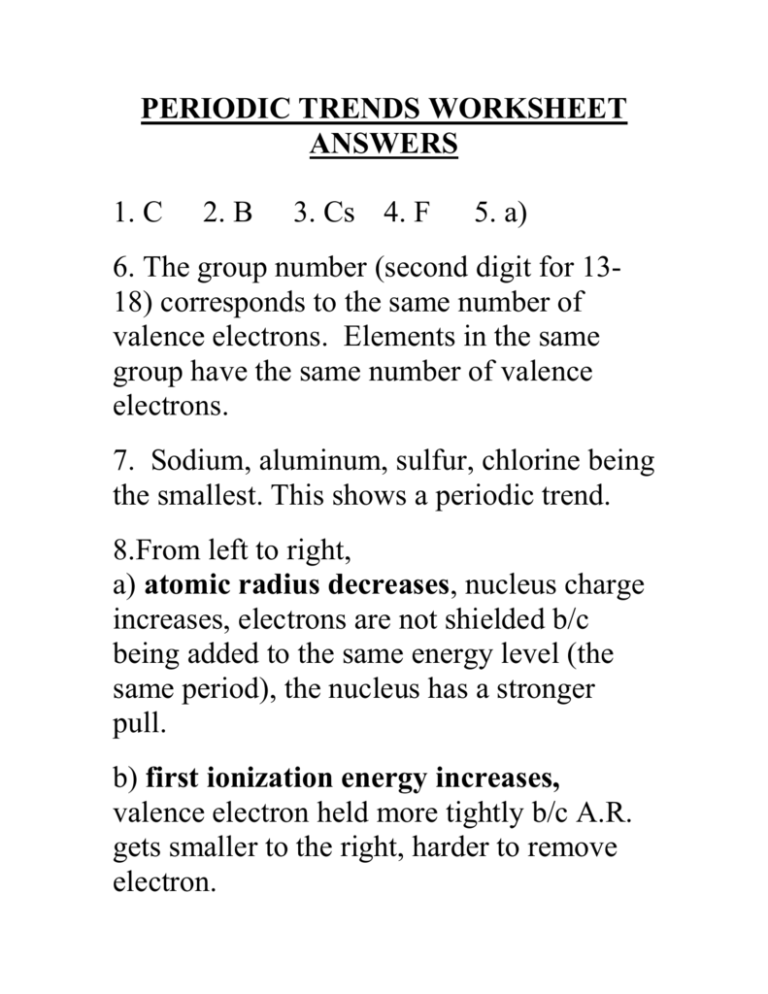Periodic Trends Worksheet Answers
advertisement

PERIODIC TRENDS WORKSHEET ANSWERS 1. C 2. B 3. Cs 4. F 5. a) 6. The group number (second digit for 1318) corresponds to the same number of valence electrons. Elements in the same group have the same number of valence electrons. 7. Sodium, aluminum, sulfur, chlorine being the smallest. This shows a periodic trend. 8.From left to right, a) atomic radius decreases, nucleus charge increases, electrons are not shielded b/c being added to the same energy level (the same period), the nucleus has a stronger pull. b) first ionization energy increases, valence electron held more tightly b/c A.R. gets smaller to the right, harder to remove electron. c) electronegativity increases, as A.R. decreases the desire to gain an electron increases. There’s a stronger attraction by the nucleus on electrons. d) metallic character decreases, moving to the right atoms want to gain electrons rather than lose them. Again, A.R. decreases and nucleus has a stronger attraction on electrons. e) electron affinity increases, on the left A.R. is bigger, the electrons are further away from the nucleus making it easier to lose an electron rather than attract an electron in a chemical reaction. Smaller atoms have higher electron affinity b/c A.R. is smaller. 9. a)Ionization Energy has the same trend as electron affinity trends. I.E. is dealing with the ease of removing an electron, left elements easily lose an electron (so I.E. is low), but they are least likely to gain an electron (so E.A. is low). The right elements desire electrons and have stronger pull on electrons so they have both a high I.E. (harder to remove an electron) and high E.A. 9b) Electron negativity is a scale that takes into account all trends (A.R., I.E., E.A.) to compare the ability of atoms to attract electrons. E.A. and electroneg. increase left to right, and decrease from top to bottom in a group. 10. Isotopes are atoms of the same element, but with different number of neutrons. Since neutrons have no charge, there shouldn’t be a change of ionization energies between the two isotopes. I.E. is based on the proton charge of the nucleus that affects how strong the nucleus holds a valence electron. 11. When chlorine forms an ion it is gaining an electron resulting in electron repulsion between energy levels (like charges repel), so the ion size gets bigger compared to a neutral atom of chlorine.When sodium forms an ion it is losing an electron from the last energy level making the ion radius smaller.







